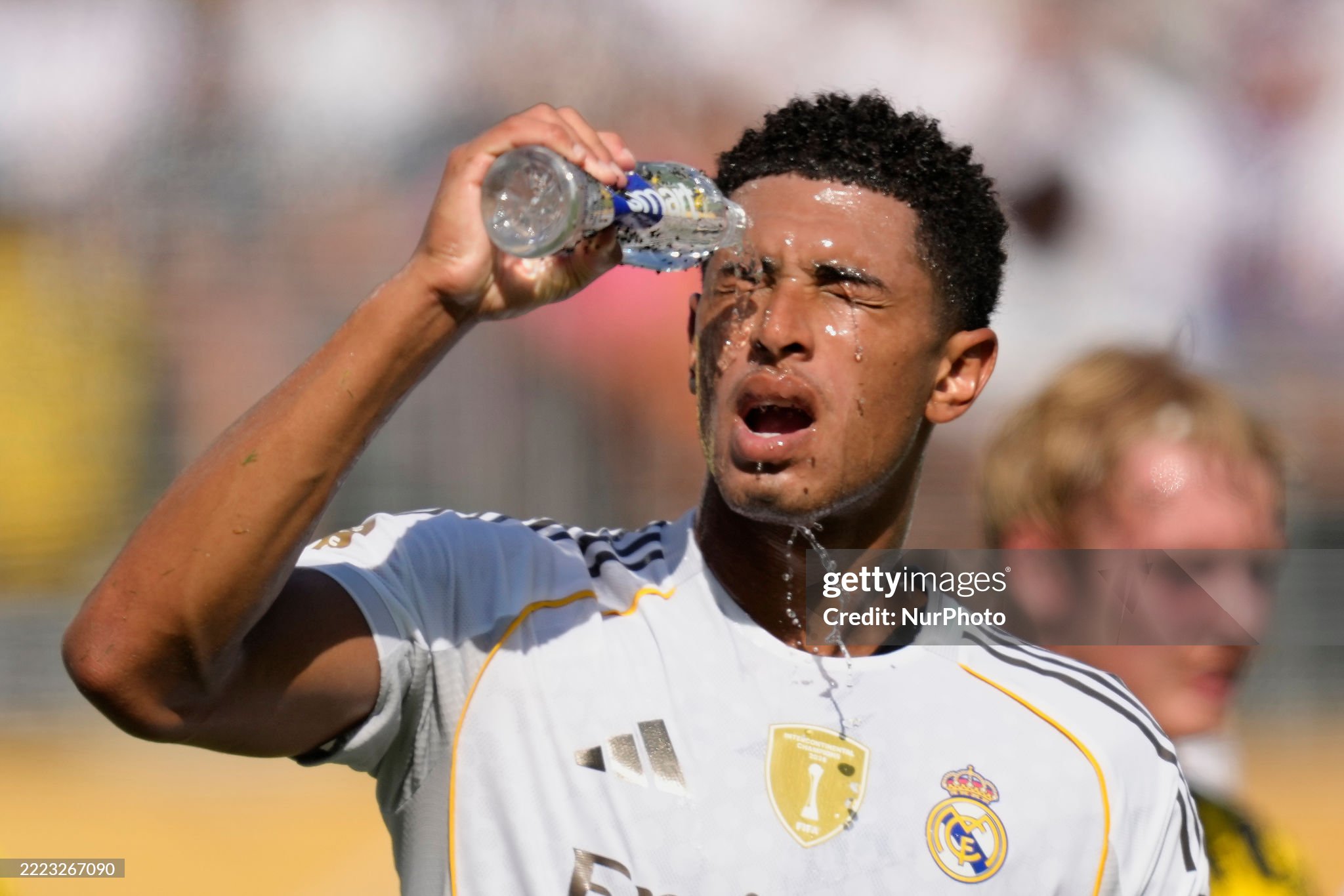It’s hot at the Club World Cup, and that’s causing quite a stir in the football world. The heat in the United States is affecting the players and has drawn criticism from coaches and players alike. At the highest levels of football, there is division over when conditions are still considered safe.
As the 2025 FIFA Club World Cup unfolds across several U.S. cities in sweltering summer conditions, a new and urgent debate has emerged at the highest levels of international football: when is it simply too hot to play?
The issue of heat-related player safety has become a focal point of controversy, with FIFPRO the international players’ union publicly disagreeing with FIFA’s current guidelines regarding extreme temperatures.
According to FIFPRO, several matches at this year’s tournament were played in conditions that should have triggered postponements or cancellations. The players’ union argues that the current protocols in place by FIFA do not adequately protect the health and well-being of players, especially considering modern climate realities and the scientific research available.
At the heart of this dispute lies the Wet-Bulb Globe Temperature (WBGT) a comprehensive metric that measures the effects of heat on the human body. Unlike traditional temperature readings, WBGT accounts for not just air temperature but also humidity, wind speed, sunlight intensity, and solar radiation, all of which can significantly affect how heat is experienced and how it impacts physical exertion. The WBGT is widely used in occupational health, the military, and elite sports to assess heat risk and determine whether outdoor activities are safe.
FIFA currently considers the threshold for "extreme risk" to begin at 32°C WBGT, meaning that only when this level is reached or exceeded would the organization consider postponing a match or enforcing mandatory cooling breaks. FIFPRO, on the other hand, takes a far more cautious stance, asserting that once 28°C WBGT is reached, conditions become dangerous enough to warrant intervention.
“We’re not aligned with FIFA on this,” says Vincent Gouttebarge, FIFPRO’s Chief Medical Officer. “FIFA’s thresholds are nearly twenty years old and haven’t been updated since. Maybe they were sufficient back then, but they no longer are.” Gouttebarge, himself a former professional footballer in the Netherlands, brings both practical experience and scientific expertise to the issue. He leads a team of medical professionals and researchers who have been working for years to redefine the standards of player safety in extreme conditions.
Gouttebarge points out that the world has changed dramatically since FIFA’s current heat guidelines were established. With global temperatures rising and summer tournaments becoming increasingly common including the next men’s World Cup set to take place in the United States, Canada, and Mexico in 2026 the urgency to revisit and update heat safety protocols has never been greater.
FIFPRO’s guidelines are based on years of scientific research, including studies in exercise physiology, sports medicine, and player recovery. “We’ve spent years reviewing relevant scientific research and have adopted a more conservative and protective approach,” Gouttebarge explains. “We also take into account direct player feedback, which is critical. Players have told us they feel unsafe and overstressed when playing in these conditions.”
Furthermore, FIFPRO looks at best practices in countries that regularly deal with high heat. “In the United States, for instance, Major League Soccer has strict heat protocols. No games are played when the WBGT exceeds 29°C. Australia’s A-League follows similar models. These leagues have already adapted why hasn’t FIFA?”
Gouttebarge adds that prolonged exposure to high WBGT levels can lead not only to dehydration and heat exhaustion, but also heat stroke, which can be fatal if not addressed immediately. “We’re not talking about discomfort; we’re talking about real medical risk. The human body cannot function safely under these conditions for 90 minutes or more of continuous high-intensity exercise.”
The controversy has been echoed by players and coaches at the tournament, with some voicing their frustrations during press conferences. “We’re professionals, but we’re not machines,” said one midfielder following a match played in midday sun. “The heat was unbearable. You can’t focus, you lose your rhythm, and it becomes dangerous.”
FIFA, however, has so far defended its heat management policy. The organization has pointed to its use of cooling breaks, hydration protocols, and consultation with local meteorological services as sufficient safety measures. But critics argue that these interventions fall short of addressing the fundamental issue: the scheduling of matches in the hottest parts of the day and in peak summer months, especially in regions known for high heat and humidity.
There is also a growing concern that the calendar itself is contributing to the problem. As more tournaments are packed into increasingly tight schedules, matches are often held during traditionally hotter periods. With FIFA planning to expand the Club World Cup to 32 teams in future editions, and with summer World Cups likely to become more common, experts warn that this issue could escalate.
FIFPRO has called for a comprehensive review of FIFA’s environmental risk management framework, particularly regarding heat. The union is advocating for independent medical panels to assess matchday conditions and transparent reporting of WBGT readings before and during matches.
This standoff is more than just a disagreement over numbers it’s a clash of philosophies. One side sees the players as elite performers capable of enduring extreme stress; the other views them as human beings with physical limits that must be respected. As climate change continues to shape the realities of global sport, governing bodies may be forced to confront these issues head-on and sooner rather than later.








